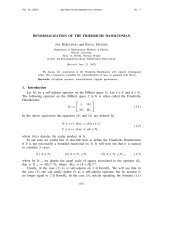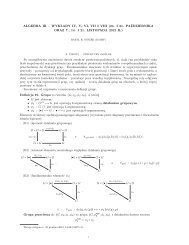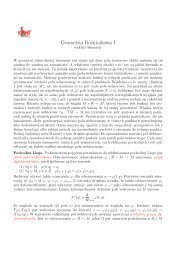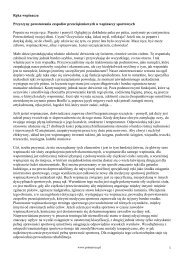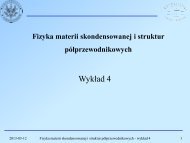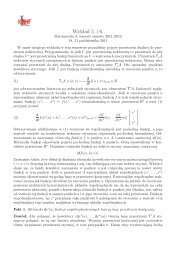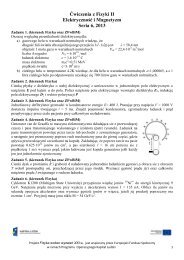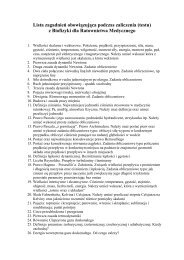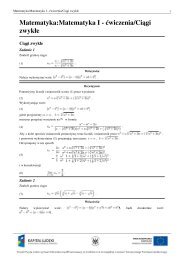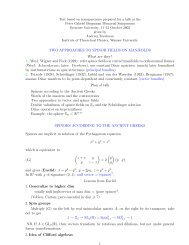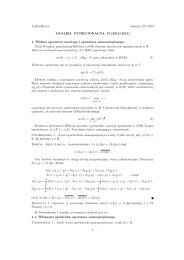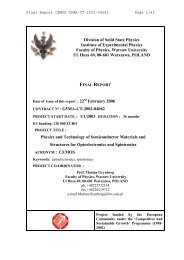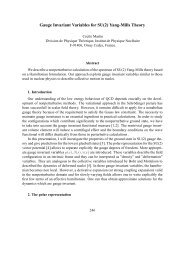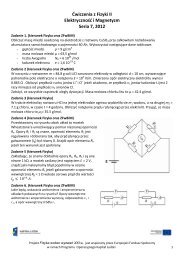XXth century_physics
XXth century_physics
XXth century_physics
You also want an ePaper? Increase the reach of your titles
YUMPU automatically turns print PDFs into web optimized ePapers that Google loves.
James Franck Gustav Hertz<br />
Franck-Hertz experiment<br />
”The apparatus used in this investigation and in the final measurement of the<br />
ionization potential is shown in Figure 1. D is a platinum wire with a thin<br />
central section which could be brought to incandescence by a current. N is<br />
a fine cylindrical platinum wire mesh with a 4-cm radius surrounding D, and G<br />
is a cylindrical platinum foil, which is separated from N by 1 to 2 mm. G was<br />
grounded through a galvanometer. Rings of platinum foil were embedded in<br />
the glass covering to prevent any current from flowing to the galvanometer<br />
from parts of the wire carrying the voltage. Besides glass and platinum, the<br />
apparatus contained no fixed parts. All leads were fused into the glass.<br />
...It was found that the electrons are reflected without energy loss from the<br />
mercury atoms as long as their velocities correspond to a drop through less<br />
than 5 volts...”<br />
Collisions between electrons and mercury vapor molecules and the ionization potential of such<br />
molecules, Verhand. Deutsch. Physik. Ges., 16, 457 (1914)



